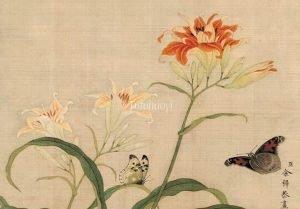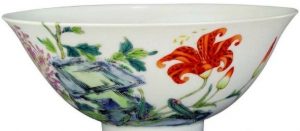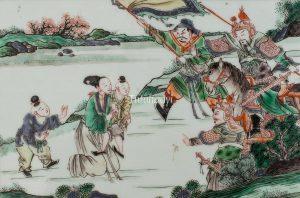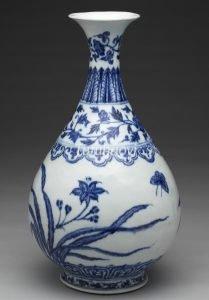Showing Results Containing
Dr Yibin Ni has discussed the differences of symbolic meanings of lily between Western and Chinese cultures in his unique research, bringing new insight into pictorial art.
This is an overview by Dr Yibin Ni on how the topic of ‘The Birthday Party of the Queen Mother of the West’ was depicted on Chinese artworks, from woodblock print during Ming dynasty to scroll painting and porcelains in Qing dynasty.
Is choosing a gift for your mother a difficult task? Not so much if your mother is a big fan of Chinese art. In traditional Chinese decorative arts, there are various images symbolising or referring motherhood. Lily flower is a typical exampleR...
Sunshu Ao (孙叔敖, c. 630 – c. 593 BCE) was a hydraulic engineer and politician during the Eastern Zhou Dynasty (770-258 BCE). When he was a child, he came across a snake one day. The snake was unusual because it had two heads. According to the legend, anybody who saw such a snake would soon die. Sunshu killed the sna...
Wang Xiang (王祥 185–269) served as the Grand Protector (taibao 太保) in the Western Jin court (西晋 265–316 CE) and, as a significant politician, has his biography in the Book of Jin (jinshu 晋书), an official historical text covering the dynasty’s history. When Wang Xiang was a boy, his mother passed away. Hi...
How the daylily, whose Chinese name is ‘xuan 萱’, came to become a symbol for motherhood in Chinese culture is explained in the blog ‘
According to the Account of Wu (吴志) in The Records of the Three Kingdoms (三国志), Lu Ji (陆绩), was a native of Wu. At the age of six, he had an opportunity to meet Yuan Shu (袁术), who at the time controlled the region of Jiujiang. Yuan Shu put out some tangerines for him to eat. Lu Ji surreptitiously stuffed three of them in...
In Zhuangzi (庄子), an ancient Chinese text from the late Warring States period (476–221 BCE) and one of the two foundational texts of Daoism, the Queen Mother of the West (Xiwangmu 西王母) was mentioned as a deity who ‘obtained the Dao (the Way)’. According to the Scripture of Great Peace (Tai...
This is a story of a righteous woman. As the army of the state of Qi (齐国) launched an invasion against the state of Lu (鲁国), soldiers approaching a Lu suburb saw a woman struggling along the road with two children. When the army got closer, she abandoned one of the children and grabbed the other, moving toward the mounta...
‘Dié 蝶’ from hú dié 蝴蝶, the Chinese character for ‘butterfly’, can be used to pun on ‘dié 耋’, meaning ‘octogenarian’ in the phrase ‘Ma...
Lily flowers and butterflies form a pun rebus picture known as ‘Xuān Dié Tú 萱耋图’, meaning ‘May mother live up to a ripe old age’. ‘Xuan 萱’ in the picture...
‘Xuan 萱’ comes from ‘xuan cao 萱草’, the Chinese name for ‘lily’. In traditional Chinese decorative arts, lily flowers symbolise motherhood and maternal bonds with children, and they figure prominently on articles created for mothers, expecting or being a birthday girl.
Related Pun Picture:...










